By Peter Hore, Associate Editor and Iain Ballantyne, Editor
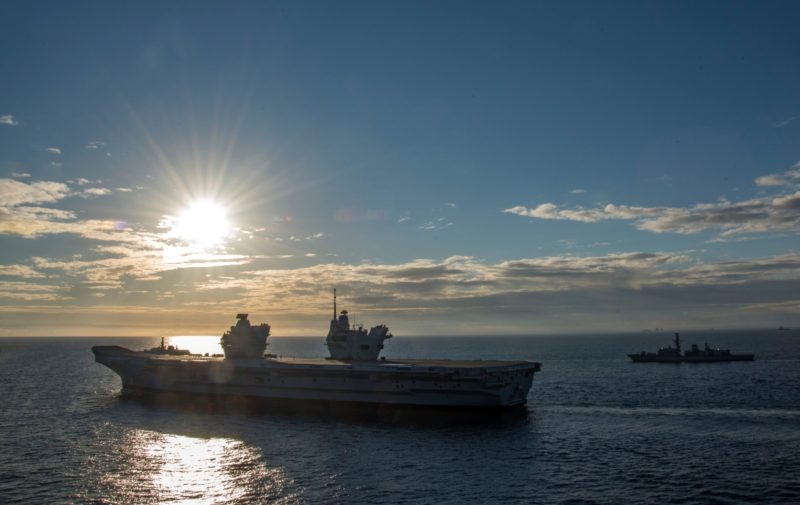
UK Prime Minister Boris Johnson’s administration is set to honour his predecessor’s decision to hold a Strategic Defence Review every five years, announcing just before the COVID-19 ‘lockdown’ its commitment to an Integrated Review of Security, Defence, Development and Foreign Policy.
In late February the P.M. explained in a written statement that it was ‘the biggest review of our foreign, defence, security and development policy since the end of the Cold War.’
Mr Johnson went on: ‘We need to grasp the opportunities of the next decade and deliver upon the Government’s priorities. This is a defining moment in how the UK relates to the rest of the world and we want to take this unique opportunity to reassess our priorities and our approach to delivering them.’
Certainly, there is every sign that it will be the most significant such review since the Strategic Defence Review (SDR) of 1997/98 after Tony Blair came to power. Following decades of commitment to a continental strategy – and to defensive posture against the Soviets in Europe – the SDR set Britain on the path to something that was new, but also tried and tested.
Back then, the Royal Navy, having entered the debate over the SDR expecting to lose what were then known as the Carrier Vessels Future (CVFs) – today’s HMS Queen Elizabeth and Prince of Wales – but won its arguments. Britain emerged with what was, in effect, a reversion to its historic and successful maritime strategy, a reset taking it away from committing heavyweight land forces to a battle against a Warsaw Pact blitzkrieg on the Central Front.
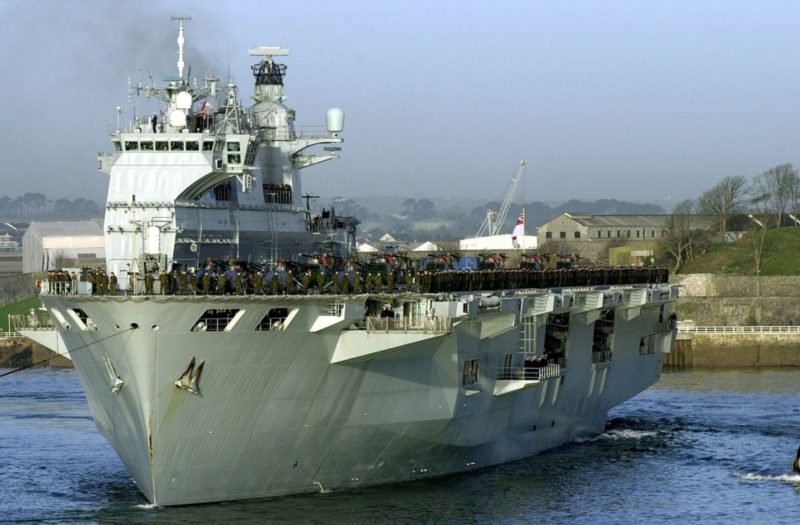
‘BLAIRS WARS’ TOPEDOED UK DEFENCE
Unfortunately, Tony Blair’s subsequent so-called ‘wars of choice’ in the early 2000s – the invasion of Iraq and intervention in Afghanistan – turned the UK back towards land-based campaigns for years. That experience has left the British people with no appetite for a certain kind of foreign field. The Navy was side-lined and sapped of funding during ‘Blair’s Wars’ and also lost crucial capability developments, with its force levels slashed.
Nevertheless, the Navy committed air assets and also 3 Commando Brigade to play a key role in the land-locked battle zone of Afghanistan. In 2003 it even managed to deploy into the Northern Arabian Gulf a bigger task group to support the Iraq invasion than it had during 1990/91’s massive – and successful – US-led Desert Shield/Desert Storm eviction of Iraqi occupiers from Kuwait.
The British naval task group performed well in 2003’s (ultimately misbegotten) adventure, launching 3 Cdo Bde ashore into Iraq’s Al-Faw Peninsula to famously ‘kick down the door’ for the rest of the coalition invasion force.
The Royal Navy did a lot with much less throughout the period 2001 – 2014. Aside from Afghanistan and Iraq operations it delivered Humanitarian Aid and Disaster Relief (HA/DR), conducted anti-piracy and counter-terrorism patrols, safeguarded UK home waters and Overseas Territories, rescued UK citizens from combat/crisis zones, waged war from (and in) the littorals off Libya. It also deterred Russian aggression as part of NATO task groups and ran the Continuous at-Sea Deterrent, as well as clearing ordnance from the seas, plus providing fishery protection along with Search and Rescue (SAR). It excelled – despite the blip of the 2007 HMS Cornwall incident in the Gulf – across the board. Today it still does so, despite being even more over-stretched.
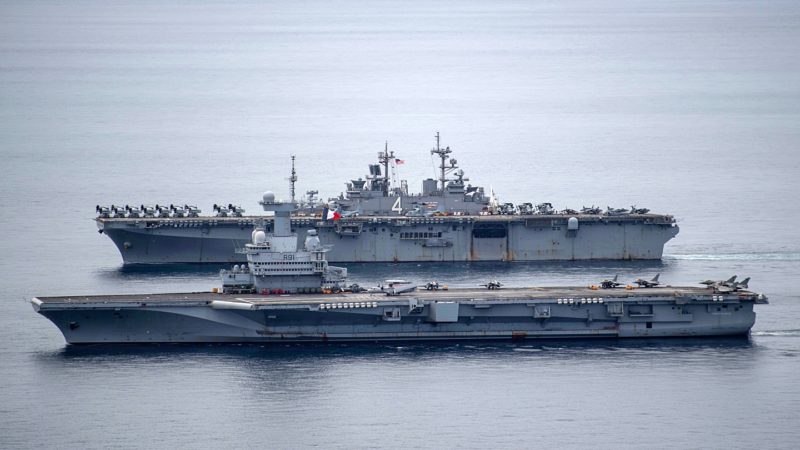
A STORY OF BUNGLING AND WRONG TURNS
SDR was probably the only review to get the strategy right in recent years, even if events subverted the results. How much more likely is it that the Integrated Review (IR), possibly overseen by ‘weirdos and misfits with odd skills’ – as the P.M.’s own special advisor calls them – is going to get the strategy right and stick to the results?
This time ‘round the buoy, following the economic shock of the COVID-19 pandemic, it remains to be seen whether Boris Johnson will maintain Britain’s £42 billion annual defence budget, along with the manifesto commitment to increase defence spending by half a per cent per annum. What is certain it that the UK Govt will seek better value for money from the eighth largest defence budget in the world (behind Germany, France, Saudi Arabia, Russia, India, China and the USA).

Johnson relies heavily on his special adviser, Dominic Cummings, who has slammed ‘big and expensive’ defence contractors for allegedly not being value for money when it comes to the UK taxpayer. Cummings has argued for buying off the shelf rather than commissioning bespoke kit for the armed forces. One of his big bugbears is the new carriers, which Cummings has characterised as a ‘farce’ and ‘unable to be sent into a serious war against a serious enemy.’ This will be news to other aircraft operators the USA, China, India, Italy, France, Spain and Russia along with Australia, Japan and Egypt who all operate big flattop amphibious assault ships.
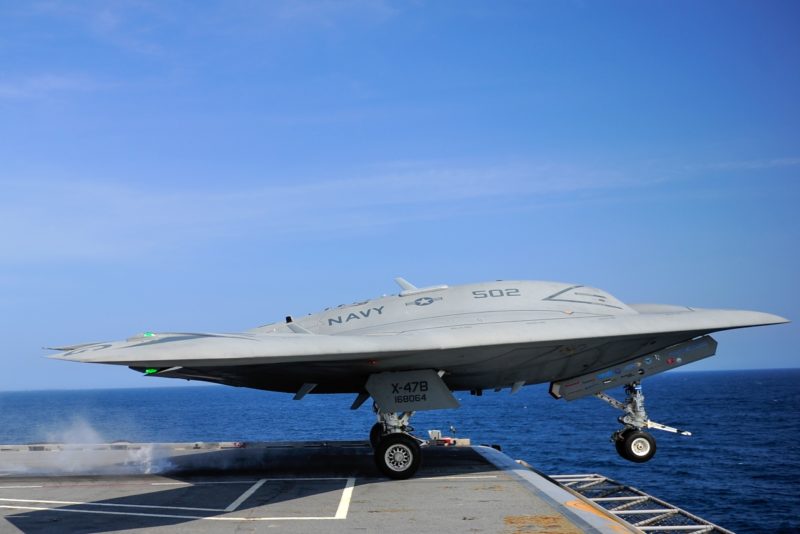
UK GOVTS NOT SERIOUS
ABOUT DEFENCE FOR YEARS
What’s hasn’t been serious is successive UK Govts, which have failed to create a Navy around the new carriers to ensure they can be employed to their full potential in deterring enemies and if necessary waging war. A start has been made, but UK force levels in escorts and submarines are woefully inadequate. Some of those the UK still operates are getting long in the tooth and lack firepower.
Failing to boost the Royal Navy in the Integrated Review – while cutting a carrier (or carriers) and amphibious ships – will reveal incredible weakness and lack of vision (or Defence reality) at the core of the Johnson administration. An abject failure of this nature will be made more acute by the UK simultaneously talking tough to China, a rising maritime power. It sees aircraft carriers as the means by which to measure the strength of a likely opponent (and whether or not they can be pushed around in all sorts of areas). China will be cock-a-hoop if any element of the Royal Navy is discarded, especially at a time when Beijing is creating a massive amphibious warfare force with, at its core, the very types of ships and naval infantry Johnson and Cummings may well discard.
A more particular argument turns on the F-35B jet, which possesses the unique and unmatched capability of operating from the British carriers without ‘cats and traps’, and the proposed buy of 138 aircraft. Embarked in the carriers, these aircraft can operate anywhere in the world and also act as mothers to swarms of those drones Cummings professes to prefer.
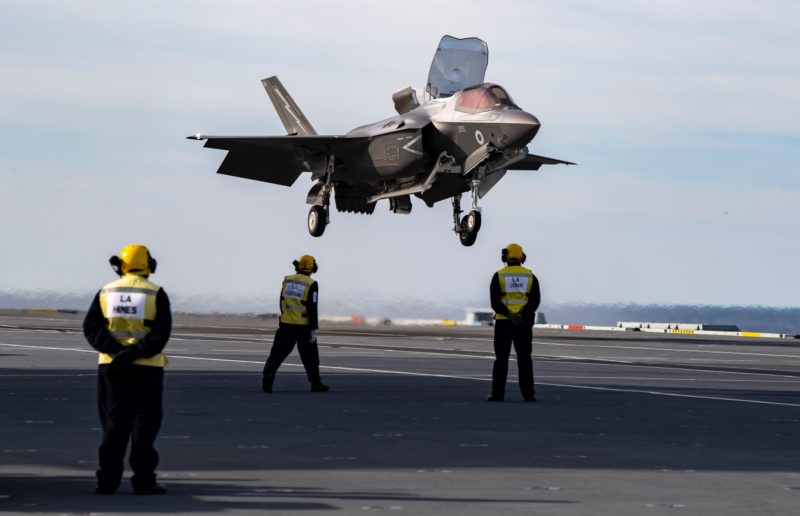
WILL BORIS BOTCH THE F-35B DEAL?
Since the UK is the only Level 1 partner in the F-35 programme with the USA and Lockheed, British industry is guaranteed a 15 per cent of the manufacture of each one of the anticipated 3,000 aircraft that will be built for Allies worldwide – and which support some 24,000 jobs across every region of Britain.
This is surely a deal that appeal to the UK Government? And it is nonsensical that the RAF should argue for any portion of this buy to be diverted to the purely land-based F-35A, which cannot be used from the carriers, as it is not a Short Take-off and Vertical Landing (STOVL) aircraft. That is very poor value for the UK taxpayer, no matter what the nominal price tag is for a F-35A compared with the F-35B. It, like the land bases it flies from, is so much more vulnerable to elimination by a potential foe than any carrier, too.
The Secretary of State for Defence, Ben Wallace, has recently stated that by 2040 most combat aircraft will be unmanned. The RAF’s Typhoons and the F-35Bs are likely to be the last manned aircraft operated by the UK. This is how the carriers, as bases for swarms of drones will enjoy a second life across their 50-year operational span.
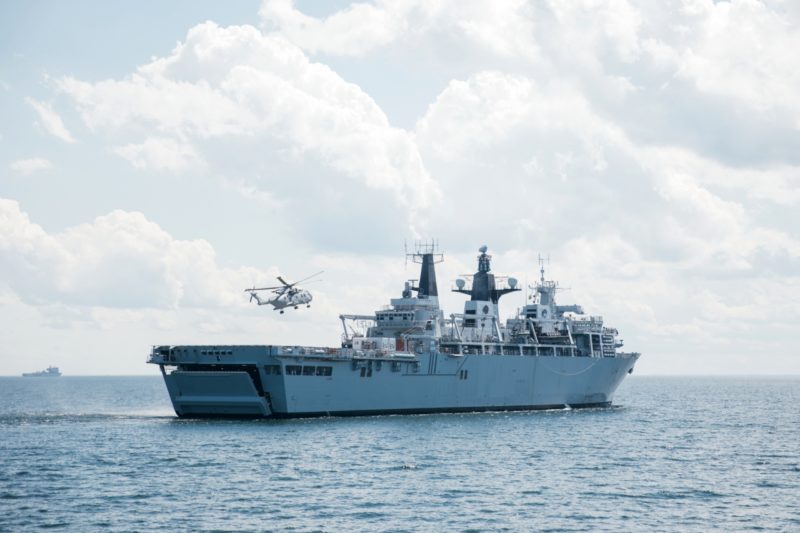
STAKES ARE HIGH FOR UK FLEET DESPITE
THIS BEING AN ERA OF MARITIME POWER
For the Navy, the stakes are extremely high during the IR and yet it is optimistic. The Naval Service acknowledges that the present defence review is the most important in 20 years, is proud of its new carriers but is anxious to have enough F-35Bs to maximise their power, reach and utility as a conventional deterrent force.
Senior officers believe, however, that the world political situation has changed in the Navy’s favour, and necessitates a full-blooded Maritime strategy. The Arctic and the Indo-Pacific region are growing in importance relative to the Gulf, while China and Russia have become more aggressive and confrontational at sea. It requires the Navy to regain its operational edge and presence in the Atlantic and even further afield, such as in the South China Sea (the latter as part of the tripartite agreement signed by the bosses of the US Navy, the RN and Japan Maritime Self-Defense Force).
Although NATO will remain the ‘industry standard’ for defence alliances, more bilateral and trilateral defence agreements will likely be summoned into being. The USA will, as ever – regardless of whoever is President – need the legitimisation of allies. Even the mighty USN is overstretched and will welcome RN support. Should there be no return to permanent forward basing of UK carrier strike groups ‘East of Suez’, there will be a call for a navy capable of providing deterrence and fighting to win wherever it is called upon to do so, whether in the Atlantic or the Indo-Asia-Pacific region.
The rapid evolution of Littoral Strike by the Royal Navy – using both the carriers and the amphibious warfare vessels, in conjunction with the Royal Marines – along with the already advanced development of drones for mine warfare and large, unmanned submersibles shows the British fleet is going in the right direction. However, the current mix of surface warships, submarines, aircraft, amphibs and auxiliaries will be needed for decades yet and foolishly wrecking that fine balance will place the UK in deep peril.


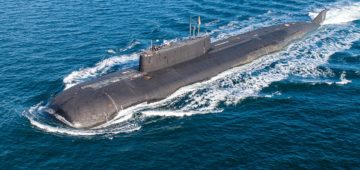




Comments
Sorry, comments are closed for this item